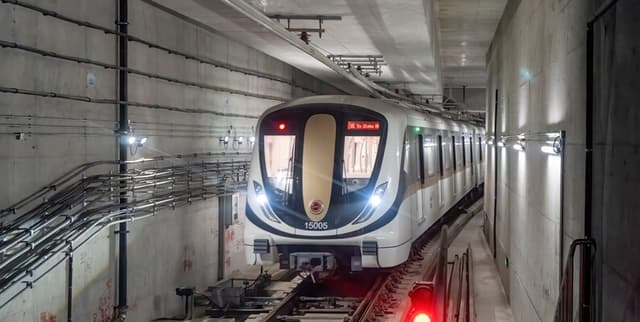Metro Train Compressor Predictive Maintenance Data
Data Science and Analytics
Tags and Keywords
Trusted By




"No reviews yet"
Free
About
Readings from an operational metro train's Air Production Unit (APU) compressor, including pressure, temperature, and motor current, have been collected. This dataset is designed to address real-world predictive maintenance challenges. It is particularly useful for tasks such as failure prediction and anomaly explanation, supporting the development of machine learning and deep learning models for these purposes. The data captures the temporal behaviour and fault events of the industrial equipment through various sensor readings.
Columns
- TP2 (bar): The measure of the pressure on the compressor.
- TP3 (bar): The measure of the pressure generated at the pneumatic panel.
- H1 (bar): The measure of pressure generated due to pressure drop during the discharge of the cyclonic separator filter.
- DV pressure (bar): The measure of the pressure drop generated when the air dryer towers discharge; a zero reading indicates the compressor is operating under load.
- Reservoirs (bar): The measure of the downstream pressure of the reservoirs.
- Motor Current (A): The measure of the current of one phase of the three-phase motor.
- Oil Temperature (ºC): The measure of the oil temperature on the compressor.
- COMP: An electrical signal for the air intake valve; active when there is no air intake.
- DV electric: An electrical signal controlling the compressor outlet valve; active when the compressor is under load.
- TOWERS: An electrical signal that defines which tower is drying the air.
- MPG: An electrical signal that starts the compressor under load when APU pressure falls below 8.2 bar.
- LPS: An electrical signal that activates when pressure drops below 7 bars.
- Pressure Switch: An electrical signal that detects the discharge in the air-drying towers.
- Oil Level: An electrical signal that activates when the oil level is below expected values.
- Caudal Impulse: An electrical signal that counts pulse outputs from air flowing from the APU.
Distribution
The dataset is provided in a single CSV file,
MetroPT3(AirCompressor).csv. It contains multivariate time series data logged at a frequency of 1Hz, consisting of 15,169,480 data points across 15 features derived from both analogue and digital sensors.Usage
This dataset is ideal for developing and testing predictive maintenance models. Specific applications include failure prediction, anomaly detection, anomaly explanation, and Remaining Useful Life (RUL) estimation for industrial compressors. It is suitable for incremental training, with the recommendation to use the first month of data for training and the remaining months for testing.
Coverage
The data was collected from a metro train compressor in an operational context. The time range for the data spans from February 2020 to August 2020. The dataset is unlabelled, but failure reports with timestamps are provided to evaluate the performance of algorithms.
License
Attribution 4.0 International (CC BY 4.0)
Who Can Use It
- Data Scientists: For building and validating anomaly detection and predictive maintenance models using deep learning or machine learning methods.
- Maintenance Engineers: To understand compressor failure patterns and develop strategies for proactive maintenance.
- Academic Researchers: For studying time series analysis and its application in industrial settings.
- Students: As a practical dataset for projects related to industrial IoT, data analysis, and machine learning.
Dataset Name Suggestions
- Metro Train Compressor Predictive Maintenance Data
- APU Sensor Readings for Anomaly Detection
- Operational Train Compressor Failure Dataset
- Railway Compressor Time Series Data (2020)
- MetroPT-3 Compressor Maintenance Signals
Attributes
Original Data Source: Metro Train Compressor Predictive Maintenance Data
Loading...
